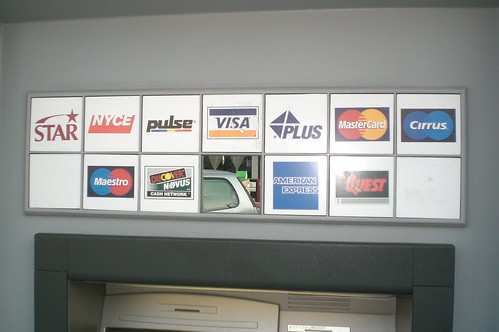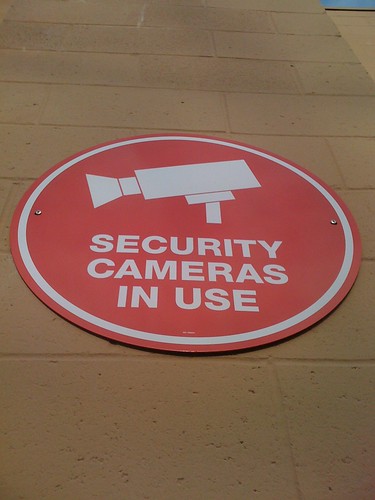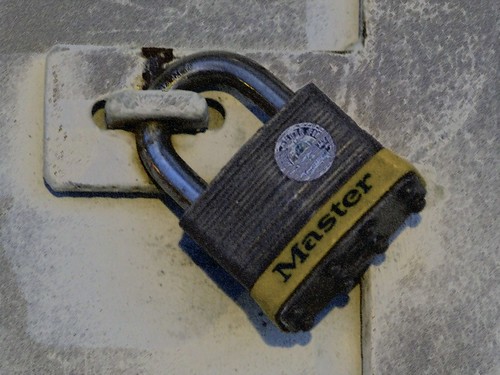Small Business Owner’s Guide to PCI Compliance
Information theft and the damage it can cause to consumers and businesses have been featured extensively in the news for most of the past decade as we move to an almost entirely online way of doing business. The usage of the Internet for business has changed the landscape of the commercial world for the better, but it does provide an avenue of attack that allows malicious entities to acquire sensitive data without ever stepping foot inside an office. For this reason, the PCI DSS was created.
Chances are high that, as a modern business owner, you at least have a passing knowledge of the need for PCI compliance. For those less technologically savvy or who do not have the time to read through extensive regulations, this need can seem like an unnecessary burden, both to your budget and your time. To help you at least become more familiar with the PCI DSS, this guide will give a high level overview of the purpose and requirements of the regulations and provide advice and resources for becoming PCI compliant.

Photo by eliazar
Table of Contents
- 1 What Is the PCI DSS?
- 2 To Whom Do PCI Regulations Apply?
- 3 Steps to Adhering to PCI Guidelines
- 3.1 Step 1: Install a secure firewall and establish good system passwords.
- 3.2 Step 2: Protect consumer data with encryption.
- 3.3 Step 3: Consistently run and update anti-virus and anti-malware software.
- 3.4 Step 4: Maintain proper access control over sensitive systems.
- 3.5 Step 5: Monitor and test network security regularly
- 3.6 Step 6: Establish an information security policy
- 4 Penalties for Failure to Comply
- 5 Help for Becoming PCI Compliant
- 6 Is PCI Compliance Enough?
What Is the PCI DSS?
PCI stands for “Payment Card Information,” and the appended DSS often seen accompanying it stands for “Data Security Standards.” The PCI DSS was created by the PCI Security Standards Council, which consists of the five largest credit card companies: MasterCard, Visa, JCB, American Express, and Discover. Its intent was to establish a system for protecting payment card data which can be used for malicious purposes easily once it is in the hands of unauthorized persons. It details the baseline security procedures that companies who interact with payment card information should follow, assists in providing information so the companies can do so, and establishes penalties for noncompliance.
To Whom Do PCI Regulations Apply?
The PCI security guidelines apply to anyone who stores, processes, or transmits consumer payment card data. It does not matter if you run a restaurant, work from home, or have a small chain of stores. If you directly interact with payment card data in any fashion, even by just processing one payment, you are almost assuredly under the purview of PCI DSS. Even if you utilize a payment gateway or merchant account service, your business is responsible for adhering to the regulations as long as it interacts with the payment data in any fashion.
Steps to Adhering to PCI Guidelines
This is a general, step-by-step guide to becoming compliant with the PCI DSS. The PCI regulations themselves outline this process, though the sections are broken down a bit further. These steps do not address every action you need to take through the process. For the exact details on how to follow these steps, consult the PCI DSS version 2.0, available on the PCI security standards site. This especially applies to the more technical sections of firewall and encryption usage.

Step 1: Install a secure firewall and establish good system passwords.
Firewalls are used to monitor and manage the network traffic running through a system. There are a number of free software firewalls available online, but a high quality, commercial firewall is typically going to be more secure. You can also opt for a hardware firewall for increased security.
Password policy is a simple security procedure that many people fail on regularly. A complex password system may be inconvenient, but when people use generic passwords such as “firstnamelastnamenumber,” “password1,” “qwerty,” or “abc123,” it becomes easier for rudimentary cracking programs to bypass this first level of defense and even makes it so an account could be accessed by an unauthorized user without the use of such a program. Passwords should be case sensitive and use a mixture of upper case letters, lower case letters, and numbers. They should also avoid common dictionary words and should not be recycled.
Step 2: Protect consumer data with encryption.
Data encryption renders a file virtually unreadable without a proper decryption key. Encryption technology has evolved to the point where, even if a hacker somehow accesses the encrypted data, decrypting the data is still a difficult task. The method is not foolproof, and you cannot store certain pieces of information even if you encrypt it.
Step 3: Consistently run and update anti-virus and anti-malware software.
Viruses and malware can find their way onto a computer through a number of seemingly harmless methods, such as installing a new program or browsing a website. Once compromised, an infected system may be more easily subjected to hacker attacks or the activity on that system, including network traffic that contains payment data, can be monitored remotely. The capabilities of these malicious programs are extensive, making the use of software to detect and remove them essential for information security.
Step 4: Maintain proper access control over sensitive systems.
Limiting the ability of unauthorized personnel to gain access to sensitive information is aided intuitively by limiting who can access it, both electronically and physically. With more people who can access the data through normal operations, the risk of a security breach increases. Payment data access should be restricted to specific user accounts based on need, and you should not utilize any group or public access accounts on sensitive systems. The physical access to the data should be limited as well and be situated in a secure and monitored area. Additional levels of access control such as managing user accounts, password cycling, secondary login verification methods like biometric data or access cards, and lockouts on repeated login attempts are also required.

Step 5: Monitor and test network security regularly
Keeping track of the systems which interact with sensitive data can be useful in determining intrusion attempts or discovering the source of a data breach. All activities should ideally be monitored, but the PCI DSS specifically calls for keeping logs of access attempts, creation of system-level objects, the activities of root and administrator accounts, any accessing of payment card data, and audit trails with specific attention paid to recording the time, outcome, origin, type, and effected components of the event.
Once all the security measures are in place, the PCI DSS necessitates a variety of regular testing procedures. Quarterly procedures include penetration testing performed by an Approved Scanning Vendor (ASV), scanning for unauthorized access points, and vulnerability scans. Extensive penetration testing is required at least once per year, and additional testing should be performed after any significant changes to your systems.
Step 6: Establish an information security policy
This is one of the more detailed and overarching requirements of the DSS. Put simply, it requires that your business has established operating procedures relating to information security. Obviously, part one of this policy is to ensure that your systems remain PCI DSS compliant. Other considerations include maintaining a list of approved electronic devices for your systems and clear information as to who and what the devices are intended. The responsibilities of “information security manager” should be assigned to an individual or group, which can be an outside security provider. These responsibilities include account management, educating personnel on information security procedures, and monitoring the company’s networks. Security procedures should be discussed with any third-party vendors the company uses, and a formal, written agreement should be composed. The plan should also specify when testing procedures should take place, and the plan itself should be subject to testing and scrutiny.
Also, bear in mind that the individual payment card companies may place extra requirements onto merchants. For example, this is a list of Visa’s requirements. While not too far off from the main PCI DSS, it is important to be aware of these requirements to avoid issues.
Penalties for Failure to Comply
While the PCI regulations are not enforced by law, the major credit card companies and banks level fines that are tiered to the volume of transactions a company processes. The exact amount of the penalty also varies based on a case by case basis, but they can range from $5,000 to $500,000. They may also continue fines on a monthly basis if non-compliance is not rectified.
Help for Becoming PCI Compliant
While the overall concept of becoming PCI compliant is fairly straightforward, the intricacies of actually adhering to all the various guidelines and regulations can be difficult for small business owners to handle, and it can often eat up the limited time of the fewer employees that the smaller companies possess. Enlisting the help of companies certified to validate and assist with PCI compliance is recommended by the PCI regulatory body and is required in some cases, such as the regular testing by an ASV made necessary in the regulations. QSAs (Qualified Security Assessors) can be used to verify that you are adhering to the PCI DSS.
Aside from the companies directly related to PCI compliance, the help of a Managed Security Service Provider (MSSP) is good practice for enhancing your general security and thus helping your systems to comply with PCI guidelines. These organizations are experienced in setting up information security functions for businesses and individuals, and utilizing them is often more inexpensive for small businesses who cannot afford to bring on several IT staff members just to handle information security. Many MSSPs can also function as QSAs, but it is better practice to use different companies for these services, even if it is not required to do so.
A report detailing some of the best MSSPs based on various criteria can be found here and the lists of PCI Security Standards Council approved QSAs and ASFs are located in the resource section at the bottom of this guide.
You can also engage in further reading with tools like the free PCI for Dummies ebook, courtesy of Qualys. This can be found on the web through various search engines.

Is PCI Compliance Enough?
PCI represents a baseline level of security that should be adhered to by companies that handle sensitive data. While it may seem to be an unnecessary burden, information security breaches have been responsible for trillions of dollars lost through fraud and secondary expenses. Even if your business does not handle high volumes of transactions from a number of different customers, neglecting to properly secure your information systems can result in data breaches that put you and your customers at risk and do extensive monetary damage. It is in your best interest to take information security extremely serious and even go beyond the security standards set by the PCI DSS.
Helpful Resources
PCI Security Standards – The main PCI DSS site. It contains the regulations, supplemental information, links to certified assistant companies, and more.
Approved Scanning Vendors – The official list of ASVs certified by the PCI regulatory body.
QSA List – A searchable database of QSAs certified by the PCI regulatory body.
PCI Compliance Guide – A helpful reference for PCI compliance questions and information.
Emerging Managed Security Service Providers, Q1 2013 – A detailed analsys provided by Forrester of the most promising MSSPs.
Becoming ‘PCI Compliant’ If You Accept Credit Cards – A checklist of tasks for becoming PCI compliant from the BBB.

